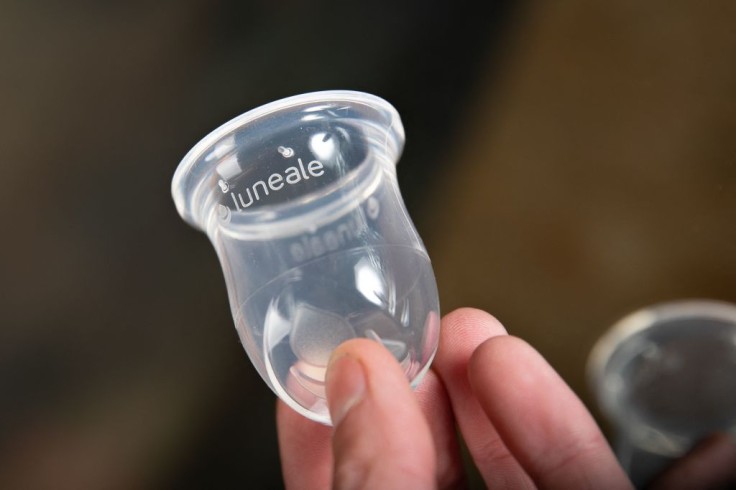
Parenting is full of challenges, and as your child grows, you might find yourself faced with unexpected topics, like discussing menstrual health.
In recent years, menstrual cups have gained popularity as a sustainable and eco-friendly alternative to traditional menstrual products.
Menstrual cups come in various shapes and sizes and are typically made from medical-grade silicone, rubber, latex, or elastomer. They offer a reusable and environmentally friendly option for managing menstrual flow. Some cups have a stem for easier removal, while others feature suction holes to create a secure seal inside the vagina.
Before delving into usage and safety aspects, it's crucial to understand the basic components and types of menstrual cups available in the market.
With that, into the world of menstrual cups, covering essential safety tips, a step-by-step guide on how to use them effectively, and providing an honest exploration of their pros and cons.
Safety Tips for Menstrual Cup Users:
1. Choose the Right Material:
When selecting a menstrual cup, opt for one made from high-quality materials, such as medical-grade silicone. This ensures both safety and comfort during use. If you have latex allergies, it's advisable to steer clear of cups containing latex. Always follow the manufacturer's recommendations regarding materials and maintenance.
2. Sterilize Before Use:
Before your first use and at the end of each cycle, ensure thorough sterilization of the menstrual cup. Boiling the cup in water for a few minutes is a common and effective method. This practice helps eliminate bacteria, ensuring the cup remains hygienic throughout its use.
3. Wash Your Hands:
Maintaining personal hygiene is paramount. Before handling the menstrual cup, wash your hands thoroughly to prevent introducing bacteria into the vaginal area during insertion. This simple yet crucial step contributes to a healthy and safe menstrual cup experience.
How To Use a Menstrual Cup:
1. Fold and Insert:
To use a menstrual cup, begin by folding it using a technique that suits you. Common folding methods include the C-fold, punch-down fold, and the 7-fold. Once folded, insert the cup into the vagina. Ensure the cup fully unfolds to create a seal against the vaginal walls, preventing leaks.
2. Positioning Matters:
Proper positioning is key to a comfortable and leak-free experience. The cup should sit below the cervix and form a seal against the vaginal walls. Rotating the cup once inserted can aid in creating a secure seal. Finding the right position might take a few tries, but with practice, it becomes second nature.
3. Regular Emptying and Cleaning:
Depending on your flow, empty the cup every 4 to 12 hours. Remove it, empty the contents into the toilet, rinse the cup with water, and reinsert. At the end of your menstrual cycle, follow the recommended cleaning procedures outlined by the manufacturer to maintain the cup's longevity.
Read Also: Creating a Positive Food Environment: 7 Toxic Phrases To Avoid When Raising Healthy Eaters
Honest Pros and Cons:
Pros:
Eco-Friendly: Menstrual cups significantly reduce waste compared to disposable products. With proper care, a single cup can last for years, making them an environmentally conscious choice.
Cost-Effective: Although the initial cost is higher compared to disposable alternatives, the reusable nature of menstrual cups makes them cost-effective over time. This can be especially beneficial for parents managing a household budget.
Less Odor: Unlike tampons, which can contribute to the development of unpleasant odors, menstrual cups are less likely to cause odor issues. The sealed environment created by the cup helps reduce the risk of bacterial growth and associated odors.
Cons:
Learning Curve: There is a learning curve associated with using menstrual cups. Some users may need time to become comfortable with insertion, removal, and finding the right technique for their anatomy.
Initial Cost: While cost-effective in the long run, the initial purchase cost of a menstrual cup may be higher compared to disposable alternatives. However, this upfront investment pays off over time.
Public Restrooms: Some users may find it challenging to manage the cup in public restrooms due to the need for proper cleaning and sterilization. Planning ahead and carrying a water bottle for rinsing can help address this concern.
Navigating the world of menstrual cups involves understanding safety measures, proper usage, and weighing the pros and cons. By incorporating these essential tips, you can confidently embrace this sustainable menstrual care option.
As a parent, staying informed about such topics enables you to support and guide your child through various aspects of their health and well-being, fostering a positive and open environment for discussions about menstrual health.
Related Article: Dealing with Teen Anxiety: A Parent's Compassionate Guide